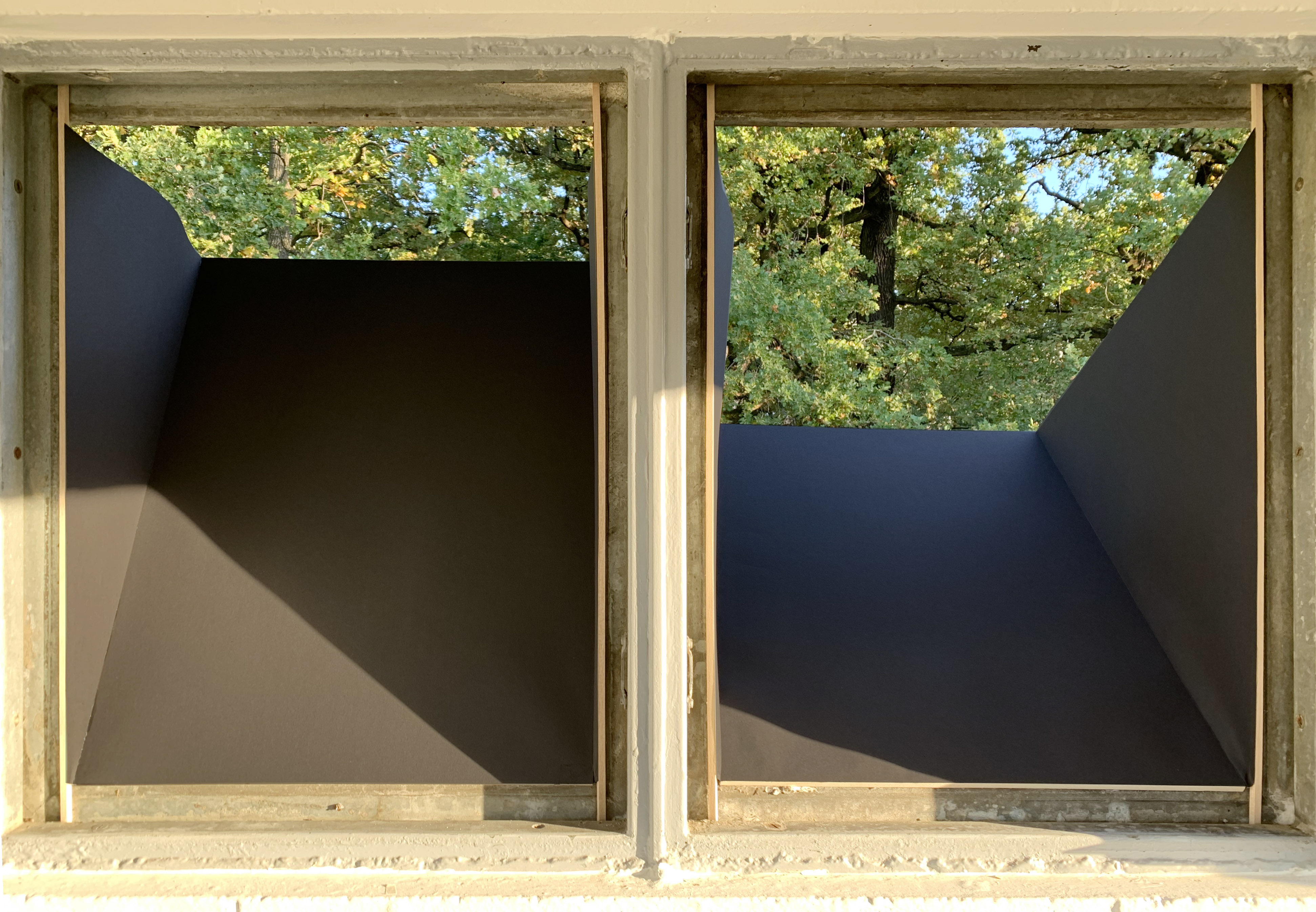CARETAKING
NINA TORP

The very function of the former Watchtower in Schlesischer Bush is to monitor a territory and a border. During the time I spent on the residency in the tower, I researched the architecture and the location and I did various artistic interventions to study and comment on the architecture. At the end of my residency, I made a prototype to modify the function of the tower. With the interventions on the top floor of the watchtower, you can see the top of the trees and the changeable sky, but the prototype window intervention will filter out what is happening on the ground. With this fragile interruption it’s impossible to monitor and survey the area on the ground.
During my research I especially appreciated the book “Spurensuche im Mauerland” by Brecht / Kimmel / Moor which was already in the library in the tower. In the book, I noticed in particular the history of the Berliner Flutgraben, the neighboring building and the studio community that hosts the residency The Watch, and is located right by the canal. Berliner Flutgraben, was built in 1872, and is a former bus depot and repair facility which under the GDR was used for the same purpose. Since the border between East and West Germany ran in the canal just outside the building, the windows in the stairwell of the industrial building, were covered with a metal plate by the GDR, to prevent workers from escaping to West Germany via the river. The metal that protected the windows by the border in the river is still up today, and the staircase is dark and without natural light. The windows that are covered have different geometric fields. On the façade of the Flutgraben building, which is constructed of brick, there is decoration of stone in elevations that protrude from the façade. The narrow edge of 3-5 cm from the wall, made it possible for a person to climb on the facade to fled to the West during the GDR era. The person balanced on the narrow edge and got over to the west side via the canal. The decorative stone was brutally cut down after this incident, and you can still see the "scars" on the facade after the brick, and the traces of this escape are so absolutely present.
I explore the theme “caretaking” in relation to how we acquire knowledge about the past and what kind of mechanisms we use to preserve it. The prototype window intervention at The Watch is an extension of an investigation into the background for scientific methods in archaeology. A frame, or a frame of reference, is a pattern of beliefs, perceptions and values we use to reason for an interpretation of what we see or find. To get a new perspective, we can choose to take a step back and assess the frame, or the lens, where this reality evolves. Subsequently we can consider alternative lenses and challenge our convictions.